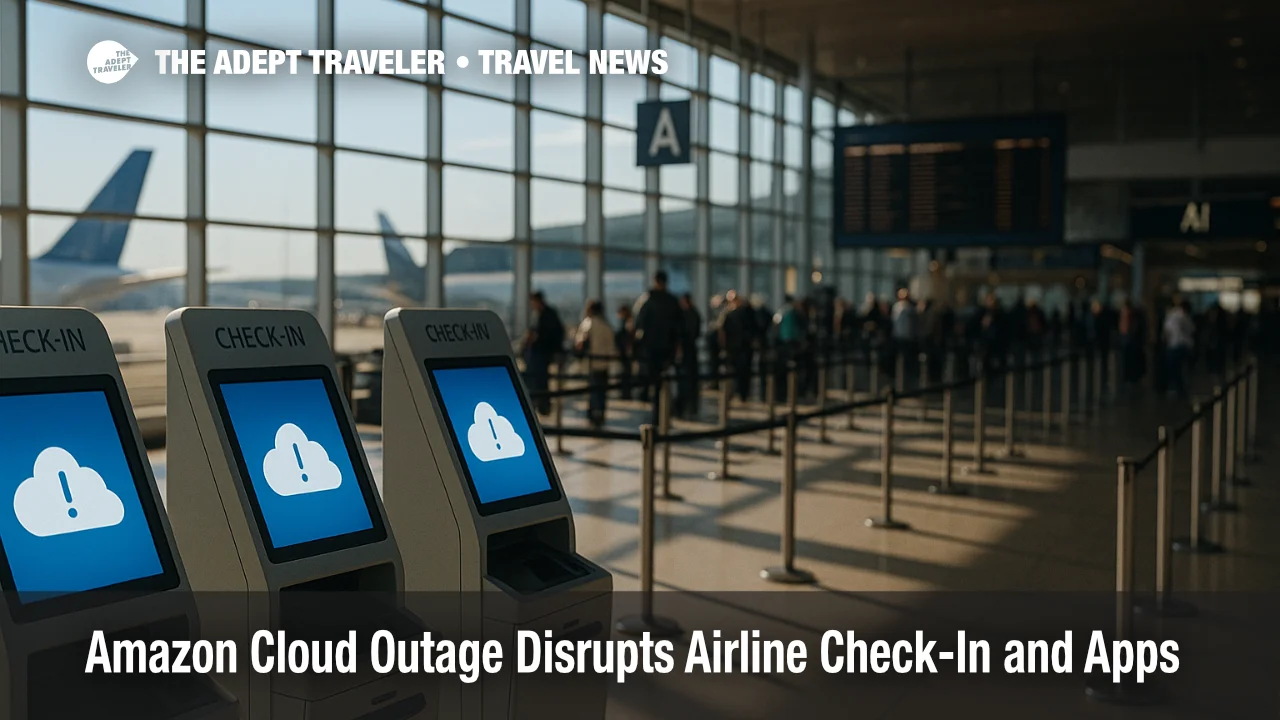Amazon cloud outage disrupts airline check-in and apps

Key points
- AWS outage began overnight, hit US-EAST-1 region
- United and Delta customers reported check-in problems
- AWS says the DNS issue was mitigated by early morning
- Expect lingering throttling and slowdowns
- Save boarding passes and arrive earlier today
A widespread Amazon Web Services outage early on October 20 disrupted hundreds of internet services and briefly rippled into air travel. Travelers for major U.S. carriers, including United Airlines and Delta Air Lines, reported problems checking in, pulling mobile boarding passes, and dropping bags. Amazon attributed the disruption to a DNS issue concentrated in its US-EAST-1 region. AWS began investigating around 211 a.m. Central, noted broad recovery by about 427 a.m., and said the issue was fully mitigated around 5:35 a.m. Central. Residual throttling may continue as systems clear queued requests.
AWS outage and airline systems
Amazon's status updates and industry reporting point to DNS resolution failures affecting the DynamoDB endpoint in US-EAST-1, a hub region many apps depend on. When that layer falters, airline web and mobile systems that rely on the same cloud can slow or time out, which explains sporadic check-in failures and missing reservations in apps. Media monitoring this morning captured customer reports that some bag-drop stations and kiosks could not retrieve bookings until systems recovered. By mid-morning, AWS indicated most service operations were succeeding, with throttling possible while backlogs processed.
Analysis
For travelers, the immediate risk is digital dependency. Airline apps, self-service kiosks, and bag-drop stations all pull from cloud-hosted back ends. When the cloud hiccups, lines lengthen as staff switch to manual workarounds. If you fly today, save boarding passes to your wallet when issued, keep the email PDF as a fallback, and bring a physical ID ready for manual lookup. If the app spins at the curb, head inside to a staffed counter or a functioning kiosk bank. Build a 30 to 45-minute buffer above your normal early-arrival routine, especially at large hubs during morning and late-afternoon banks.
Airlines already invest in redundancy, including multi-region architectures and on-premise caches for core functions like boarding and bag tagging. Still, concentration in one hyperscale region can create uneven outages. Expect carriers to review regional failover and offline-mode processes after today's incident. Travelers benefit most from simple prep: early check-in, offline pass storage, and flexible payment for bags if a kiosk cannot read a reservation immediately.
American Airlines Tech Upgrades Aim To Smooth Summer Travel
Final thoughts
An AWS DNS issue in US-EAST-1 briefly knocked airline apps and check-in off balance on October 20, then stabilized by early morning. Keep travel basics in place today, including offline boarding passes and extra buffer time. Cloud hiccups happen; preparation reduces stress when a future Amazon cloud outage touches air travel again.
Sources
- Service health, AWS Health Dashboard
- Fortnite, Snapchat among major apps to go dark in global AWS outage, Reuters
- AWS says services are coming back online after an outage, Business Insider
- Major AWS outage takes down Fortnite, Alexa, Snapchat, The Verge
- 'Significant signs of recovery' after major internet outage, Sky News
- United Airlines among major companies hit by AWS outage, Skift
- Amazon internet outages impact travel industry, TravelPulse
